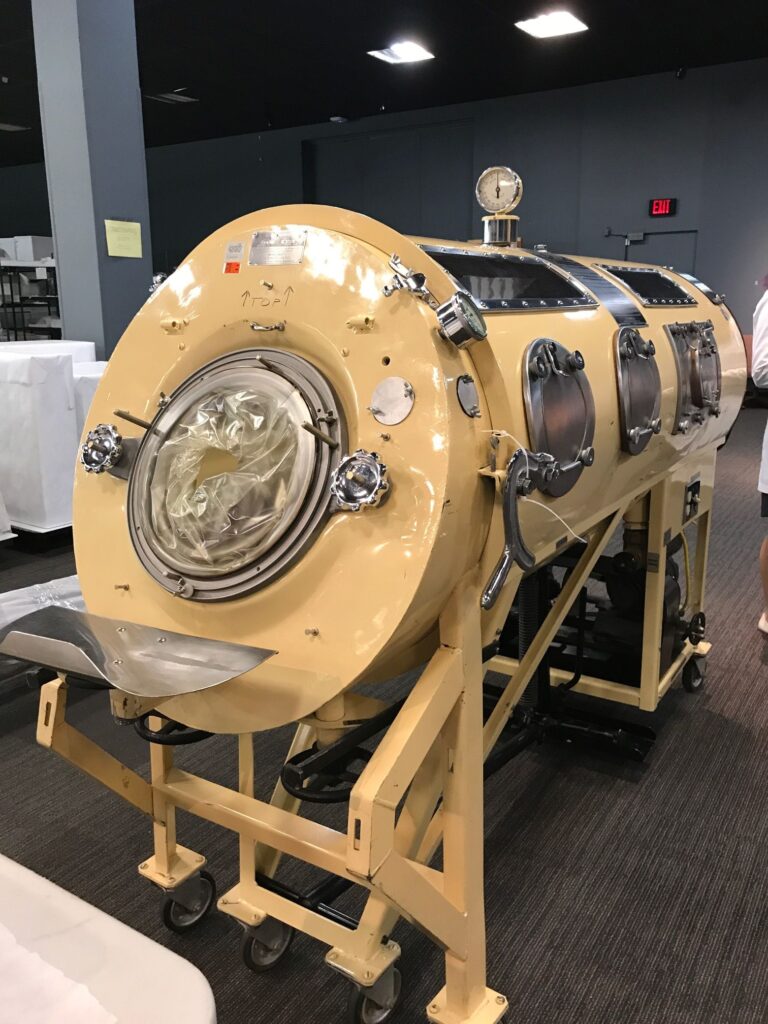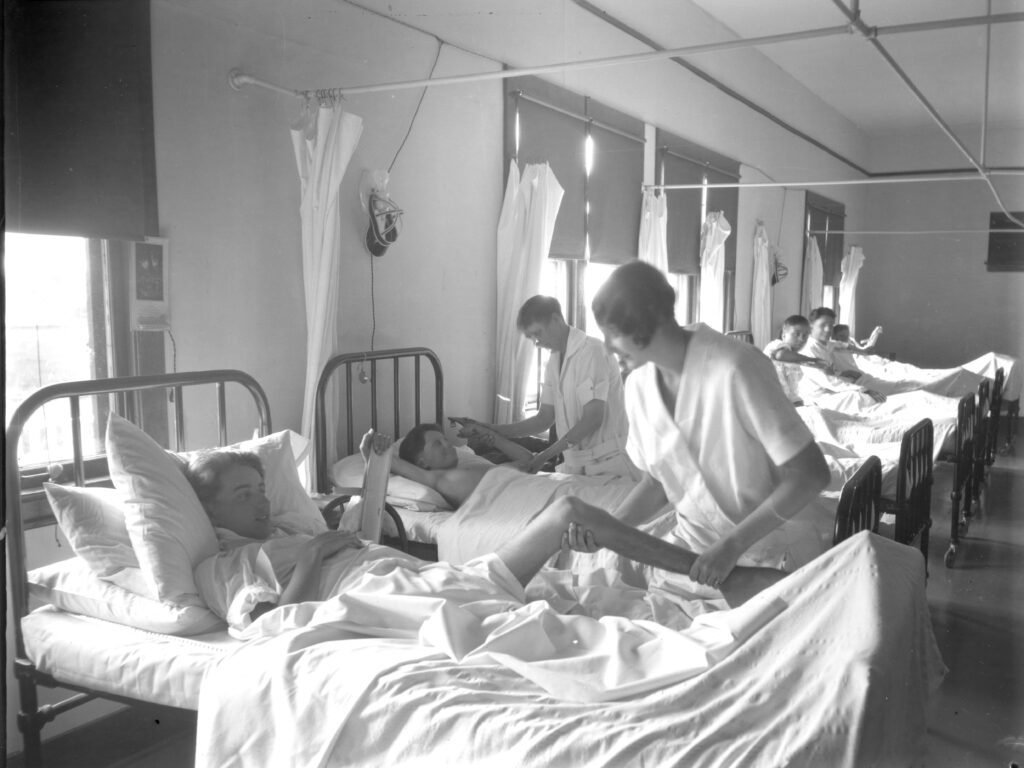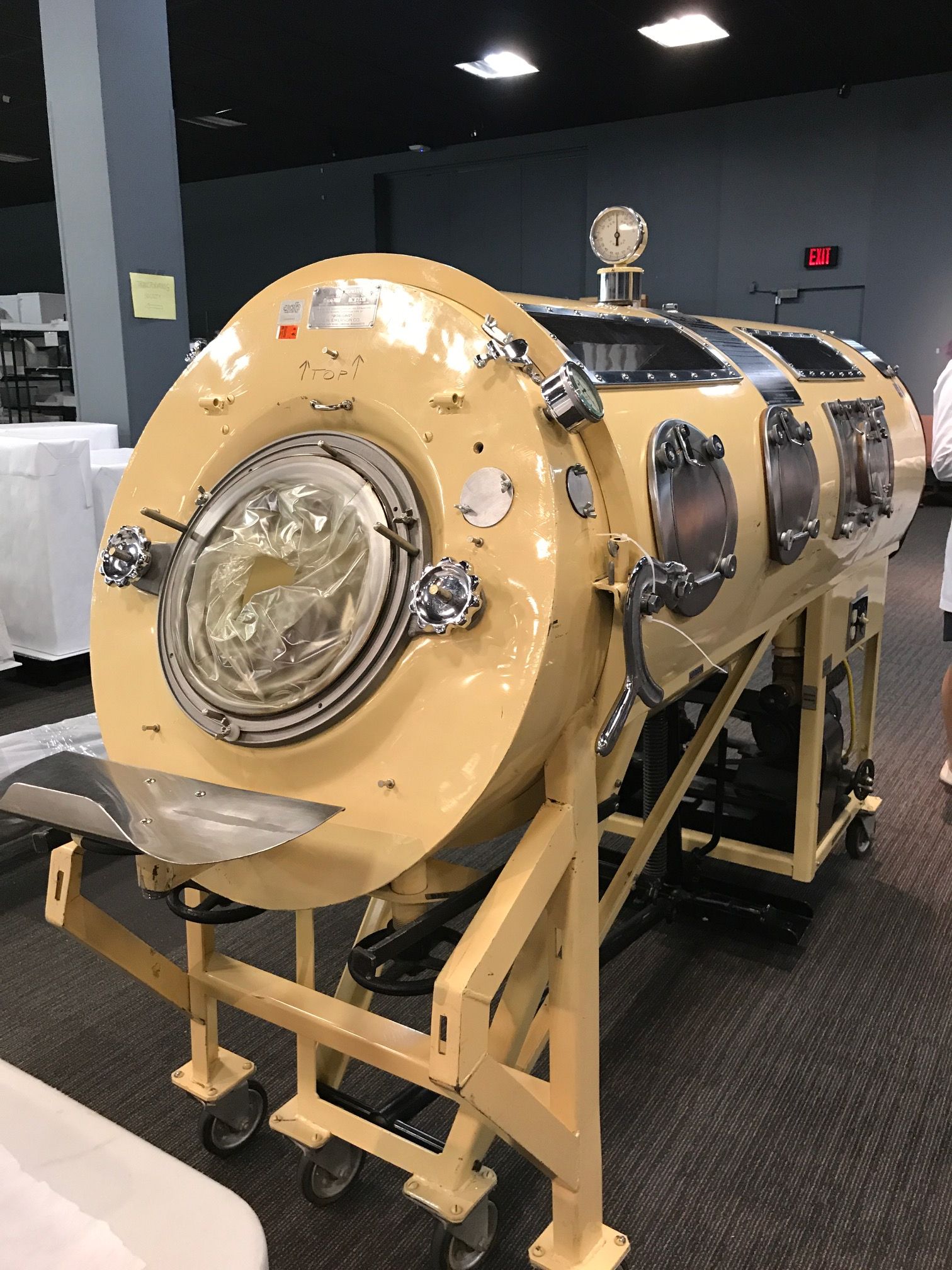It was late in October 1947 that the school year finally started. It is fair to say that a start to school this late in the fall was not ideal, but it was necessary because polio had made its way to Edmonton once again. Usually October was the time when polio cases tended to decline, those who contracted it had recovered, and those who had not recovered remained in the hospital.
Records show that polio epidemics had hit Edmonton since the 1920s, and as a result, the ‘infantile paralysis’ hospital was built near the University of Alberta in 1928 to accommodate the demand for treatment and research on polio[1]. However, the hardest years were the consecutive years from 1947 to 1953. Thankfully, great advances were made in the knowledge and understanding of the poliovirus; however, the damage that was caused could not be ignored.

University of Alberta Archives, UAA-1969-097-743c.
The Royal Alexandra Hospital was an important facility during the polio epidemics as it was the home to nursing school as well. Dr. Russell Frederick Taylor, an Edmonton physician, became the director of the polio ward at the Royal Alexandra Hospital and recalled that “patients learned to cluck their tongue against the roof of their mouth, clicking hard enough to summon help over the noise and confusion of the ward before losing consciousness.”[2] With cases of polio still on the rise, “the Royal Alex [hospital] formed a polio committee and most doctors in Edmonton volunteered to work shifts on the ward.”[3]
One evening, a thunderstorm raging through the city suddenly cut power to the Royal Alex hospital.
The hospital emergency generators turned on, but they did not support the iron lungs.
A rush of nurses who lived in the Nursing residences flooded towards the Polio Ward to begin the tedious process of manually operating the iron lungs.[4] Without allowing fear to overtake them, these health professionals persevered through a most challenging period in their education and careers.

15 June 2017 @RoyalAlberta Twitter.
An artificial respirator also known as the iron lung was used to help patients with paralyzed lungs to mimic breathing. For many, this aided in their recovery, and they only had to spend minimal amounts of time inside the iron lung. For more severe cases, some patients remained in the iron lung 24/7 for prolonged amounts of time.
The paralysis is not limited to muscles in limbs such as the arms or legs but also muscles in organs such as lung tissues which can prevent someone from being able to breath on their own.
Poliomyelitis is caused by a virus via the fecal-oral path where the virus enters through the mouth (i.e., food, hands, water) and gradually makes its way through the digestive tract. In most cases the immune system can fight off the virus, but when the body cannot protect itself, the virus makes its way to the spinal cord to attack motor neurons that can cause paralysis.
A prominent feature of polio was that it most often targeted children who did not have the advanced immune response that adults could have; “the tendency for poliomyelitis to affect young children coupled with resulting paralysis, is why it was known popularly for many years as infantile paralysis.”[5] The irony of the polio epidemics is that they were the result of modern sanitation practices that prevented children from being exposed to poliovirus at younger ages when they still carried antibodies against the virus from their mothers.[6]
As polio was a virus that was more prominent during the summer months, there was debate around whether schools should open as scheduled for September, when the case numbers of polio were still on the rise. There are records of Edmonton Public School Board (EPSB) delaying the return to instruction by as much as four weeks between 1947 and 1953. EPSB and local health authorities collaborated during these times to produce films to “show to school children personal cleanliness,”[7] in hopes to educate children on the danger they faced if they did not practice exceptional personal hygiene habits.
In addition to the initiatives that Edmonton Public schools implemented on their own, the City of Edmonton health department and the health services of EPSB amalgamated in 1954 – a beneficial arrangement for both parties and crucial to the management of polio.
The development of the inactive polio vaccine (IPV or Salk Vaccine) in 1955 and the oral polio vaccine (OPV – or Sabin Vaccine) in 1960 were game changers in the fight against polio. At an Edmonton Public Schools Committee meeting in 1954, there was discussion between the school board and the City Health Department about the possibility of using school buildings for trial vaccination clinics.[8] These sessions took place between May 18th to the end of June in 1954 as Edmonton was one of the few cities in Canada to receive a small batch of the Jonas Salk vaccine while in its trial phase.

It becomes evident that educational institutions played a vital role in the containment and transmission of polio resulting in the debate about school closures, as well as in school vaccination programs. Edmonton Public School Board Annual Reports of 1961[9] and 1963[10] provide details of the health and wellness conditions of schools and pupils. In both annual reports there are discussions about what the school has done to slow the spread of polio as well as other communicable diseases that target children at alarming rates. Furthermore, there is discussion about the progress that has been made with the vaccination program that is hosted within schools.
The undeniable role that polio played in the advancement of paediatric medicine and sanitation while adapting to developing knowledge by health care workers, is still remembered today.
References and Readings
[1] Christopher Rutty, Sue C. Sullivan. This is Public Health: Canadian History, (Ottawa: Canadian Public Health Association, 2010), 63.
R. B. Jenkins. “Some findings of the Epidemic of Poliomyelitis in Alberta, 1927” Canadian Public Health Journal, 20 no. 5. 1929: 220.
[2] Taylor, Polio ’53, 21-22.
[3] Christina Dorward, and Olive Tookey. Below the Flight Path: A History of the Royal Alexandra Hospital and School of Nursing. (Edmonton: The Alumnae Association of the Royal Alexandra Hospital School of Nursing, 1968), 113.
[4] Below the Flight Path, 115.
[5] Leah Morton. “From Nose Sprays to Nursing Shortages: Managing Epidemic Polio in Manitoba, 1928-1953” (PhD. Dis., University of Manitoba, 2013), 14, Networked Digital Library of Theses & Dissertations.
[6] Bunimovich-Mendrazitsky, S., and L. Stone. “Modeling Polio as a Disease of Development.” Journal of Theoretical Biology 237, no. 3 (December 7, 2005): 302-315–315. https://doi:10.1016/j.jtbi.2005.04.017
[7] Enid Blakey. Report of Research Program Carried Out in the Province of Alberta, 1950-1951. (Canadian Foundation of Poliomyelitis Alberta Chapter, 1952,) 67.
[8] Edmonton Public School Board. Edmonton School District No.7 Schools and buildings 1881- 2009. Edmonton: Edmonton Public School Board Archives and Museum, 2009.
[9] Edmonton Public School Board No. 7. Annual Report 1961. Edmonton, 1961.
[10] Edmonton Public School Board No. 7. Annual Report 1963. Edmonton, 1963.
Other Resources
A nurse is with young polio patients at the University Hospital in Edmonton, AB. From the Gov. of Canada Library & Archives.

